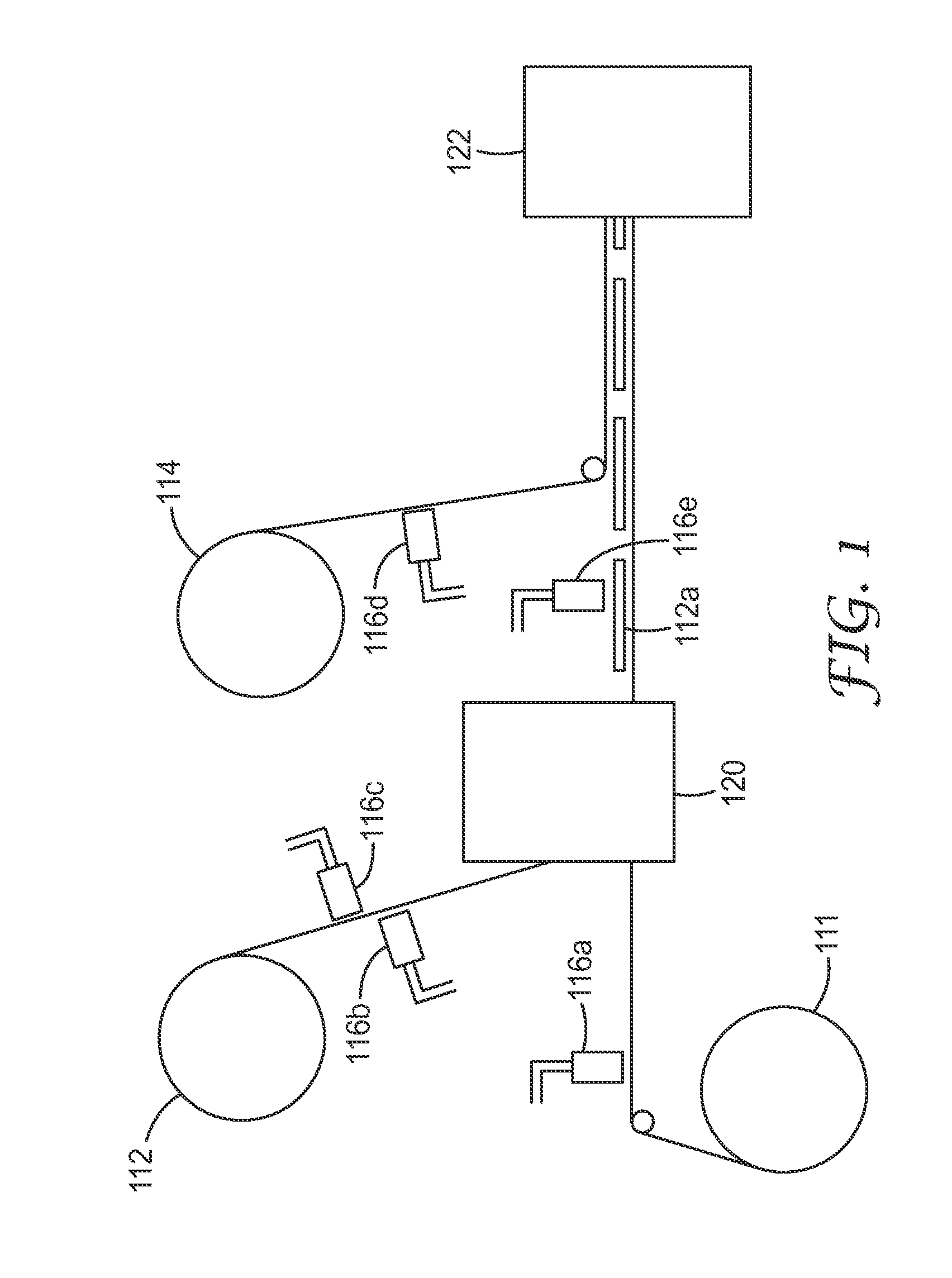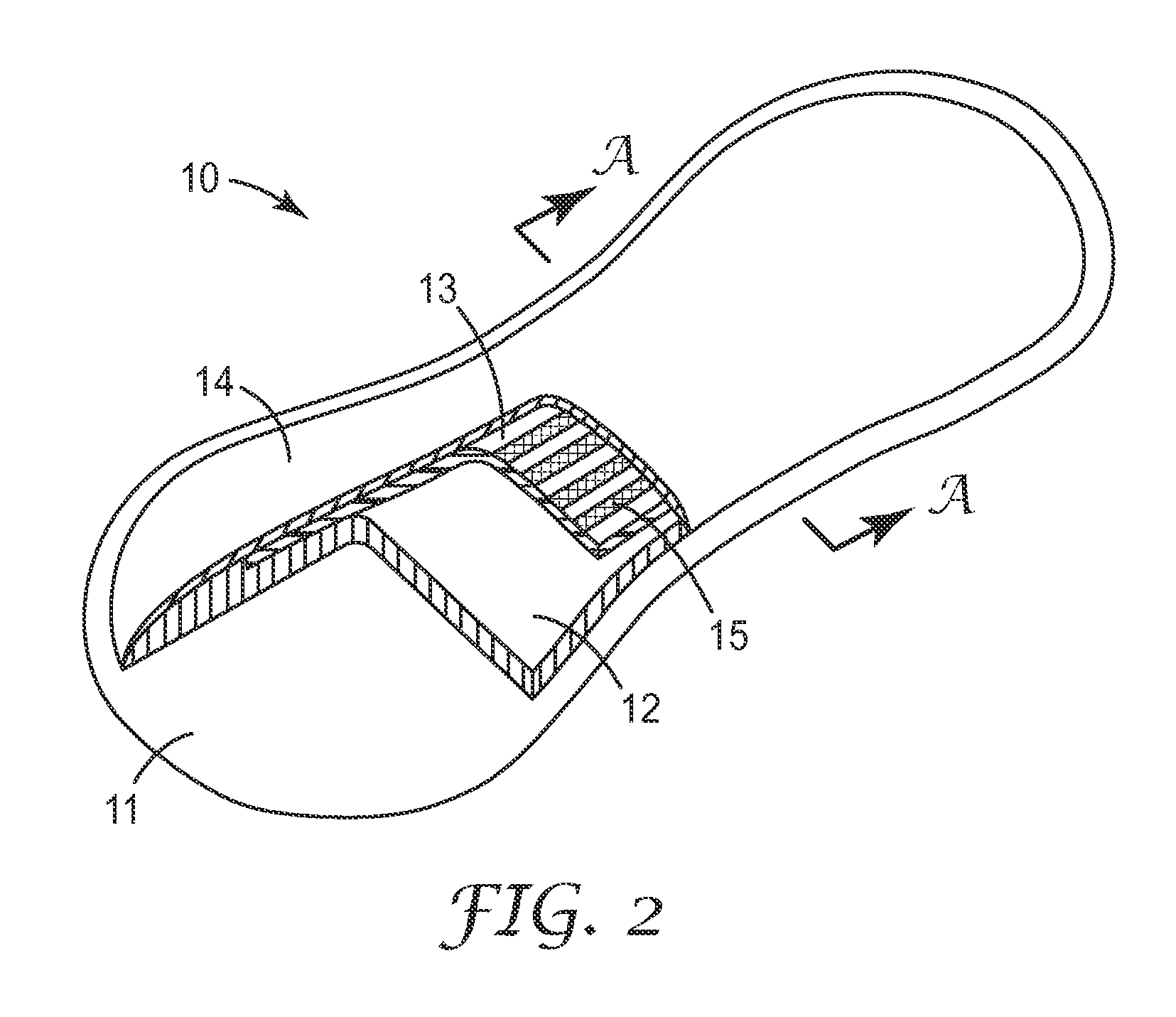Antimicrobial disposable absorbent articles
a technology of absorbent articles and antimicrobial compositions, which is applied in the direction of bandages, biocide, drug compositions, etc., can solve the problems of generating malodors associated with microbial growth and metabolites, forming toxins, irritants or odors, and causing embarrassment for users of these products
- Summary
- Abstract
- Description
- Claims
- Application Information
AI Technical Summary
Benefits of technology
Problems solved by technology
Method used
Image
Examples
examples
Test Methods
Odor Testing in Artificial Urine
[0117]To create the test inoculum, an overnight culture of Proteus mirabilis ATCC #14153 grown in tryptic soy at 37° C. was diluted 1:50,000 into filter-sterilized artificial urine (prepared according to Sarangapani et al., J. Biomedical Mat. Research 29:1185) containing 5% (v / v) tryptic soy broth (TSB, from Becton, Dickinson and Company, Franklin Lakes, N.J.). Test materials were placed into sterilized 100 mL Pyrex bottle and inoculated such that the test material was not saturated by the inoculum. Unless otherwise noted, 3 mL of inoculum was added to a 1-inch diameter core cut from a personal hygiene article. The bottles were sealed and incubated for approximately 24 hours at 37° C. After incubation, one to four people were asked to briefly open the jars under their noses and rate the samples for ammonia odor. Ammonia test strips (pHydrion) were used to estimate the ammonia concentration (in ppm) for samples as indicated.
Odor Testing in ...
control examples 1-3 and examples 1a-14
[0131]Pad samples were prepared and artificial urine odor testing was carried out as described above. For these examples, the antimicrobial composition was hand coated onto the nonwoven substrate. The amount of SA ranged from 4 weight percent to 20 weight percent and the PEG 3350:CA carrier ratio was either 2:1 or 1:1. Several samples of unmodified pads were also tested as controls. The antimicrobial coating compositions and odor testing results are shown in Table 1.
TABLE 1PEGPadAntimicrobialSA3350:CAweightcoating weightExample(weight %)ratio(grams)(grams)Odor testing-artificial urineControl 1nonenonenot0.0000strong odor (50 ppm)recordedControl 2nonenone0.420.0000strong odor (50 ppm)Control 3nonenone0.370.0000strong odor (50 ppm) 1a4%2:10.370.1130no detectable odor (0-5 ppm) 1b4%2:10.410.1162some detectable odor (20-50 ppm) 2a6%2:10.400.1184no detectable odor (0 ppm) 2b6%2:10.370.1126no detectable odor (0 ppm) 3a8%2:10.420.1584no detectable odor (0 ppm) 3b8%2:10.420.1175no detectabl...
control example 4 and examples 15a-15c
[0132]Pad samples were prepared and artificial urine odor testing was carried out identical to Examples 3a-3e described above, except that the antimicrobial composition was coated onto the nonwoven substrate using the spray application method described above. A sample of an unmodified pad was also tested as a control. Results are provided in Table 2.
TABLE 2PadAntimicrobialweightcoatingExample(grams)weight (gsm)Odor testing-artificial urineControl 40.47noneStrong ammonia odor (50 ppm)15a0.4440 gsmno detectable odor (0 ppm)15b0.4040 gsmno detectable odor (0 ppm)15c0.4640 gsmno detectable odor (0 ppm)
PUM
| Property | Measurement | Unit |
|---|---|---|
| melting point | aaaaa | aaaaa |
| wt. % | aaaaa | aaaaa |
| wt. % | aaaaa | aaaaa |
Abstract
Description
Claims
Application Information
 Login to View More
Login to View More - R&D
- Intellectual Property
- Life Sciences
- Materials
- Tech Scout
- Unparalleled Data Quality
- Higher Quality Content
- 60% Fewer Hallucinations
Browse by: Latest US Patents, China's latest patents, Technical Efficacy Thesaurus, Application Domain, Technology Topic, Popular Technical Reports.
© 2025 PatSnap. All rights reserved.Legal|Privacy policy|Modern Slavery Act Transparency Statement|Sitemap|About US| Contact US: help@patsnap.com



